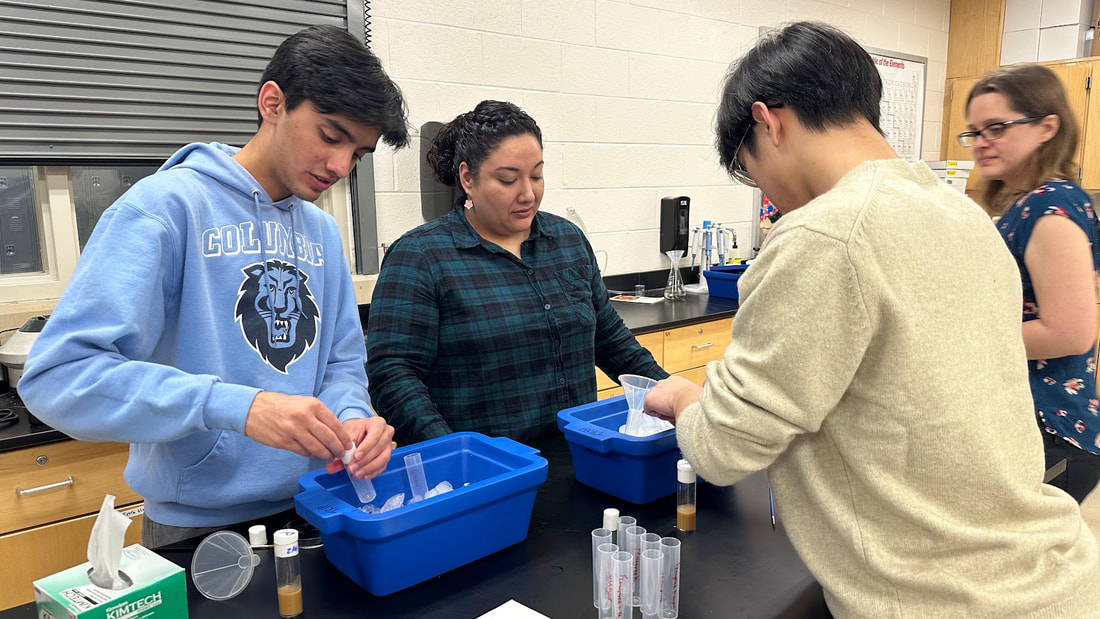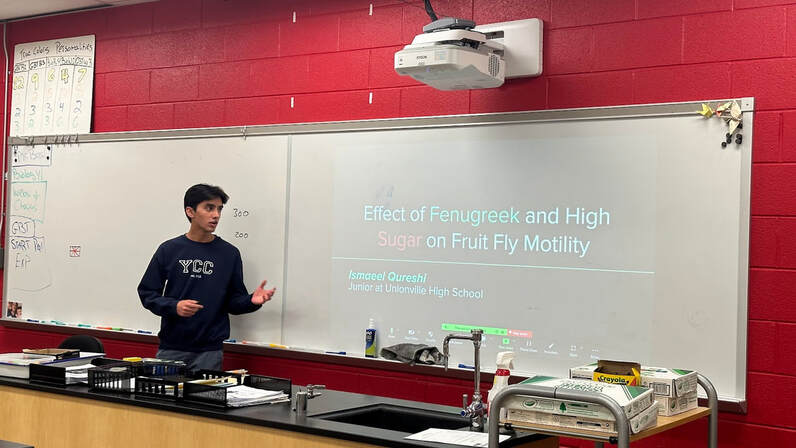|
Hi again! These past few fruit fly-filled weeks have been quite enjoyable, to say the least. While I was initially nervous about working with live flies, I’ve realized that it’s not as difficult as it seems. Finally getting to do actual lab work was rewarding; I learned a great deal about how to properly use flies for experimental testing. To start the experimental part of the program, we were all assigned kickoff experiments to help familiarize us with fruit flies and the various assays that we can perform. My project looked at the impact of a high sugar diet and fenugreek on fruit fly motility. Fenugreek is a plant native to parts of Asia and Europe that has been shown to have slight positive impacts on health, such as lowering blood sugar in diabetic and pre-diabetic people. I hypothesized that fenugreek would increase fly motility because of its overall positive impact on health, while a high-sugar diet would decrease fly motility because of the long-term negative effects that sugar has on health. In my experiment, I used the Negative Geotaxis Assay, which measures fly activity by seeing how far they can climb up a vial in 3 seconds. I learned an important lesson while performing this assay: don’t take blurry pictures. After running through the full assay, I realized that many of the pictures I had taken were unclear, making it hard to see where the flies were in the vials. As a result, I had to redo the whole assay again, each time making sure that all the flies were visible in the photos. Although it was inconvenient, making a mistake performing the assay helped me pay more attention to detail, which will hopefully come in handy down the line. After we finished our kickoff experiments, we started brainstorming for our independent projects. Coming into the program, I knew I wanted to study something related to addictive drugs and brain function, but I wasn’t really sure how that would translate into an independent project. The process of turning my interests into a project was definitely an interesting experience. The project that I originally had in mind involved measuring the ability of brain-damaged flies to become addicted to substances, but after talking with Dr. Purdy and Dr. Valdez, we came to the conclusion that it would not be relevant to helping overall human health. While I was initially demoralized, with their guidance, I was able to settle on a project that I was happy with. Addiction to substances has been shown to cause a decline in memory, so I wanted to see if there was any way that decline could be reversed. My whole life, my parents have told me that almonds improve memory, so I did some research as to why that is. I found out that almonds are high in Vitamin E, which reduces neurodegeneration by preventing cell damage. After finding that out, I decided that the question my project would answer would be, “Can Vitamin E ameliorate addictive drugs’ effect on memory?” I wanted to use developing brains for my project, so I decided to use the Larval Memory Assay. I am super excited to delve deeper into my project, and I can’t wait to find out what the results will be. Until next time!
0 Comments
Your comment will be posted after it is approved.
Leave a Reply. |
Archives
April 2024
Categories
All
|


 RSS Feed
RSS Feed